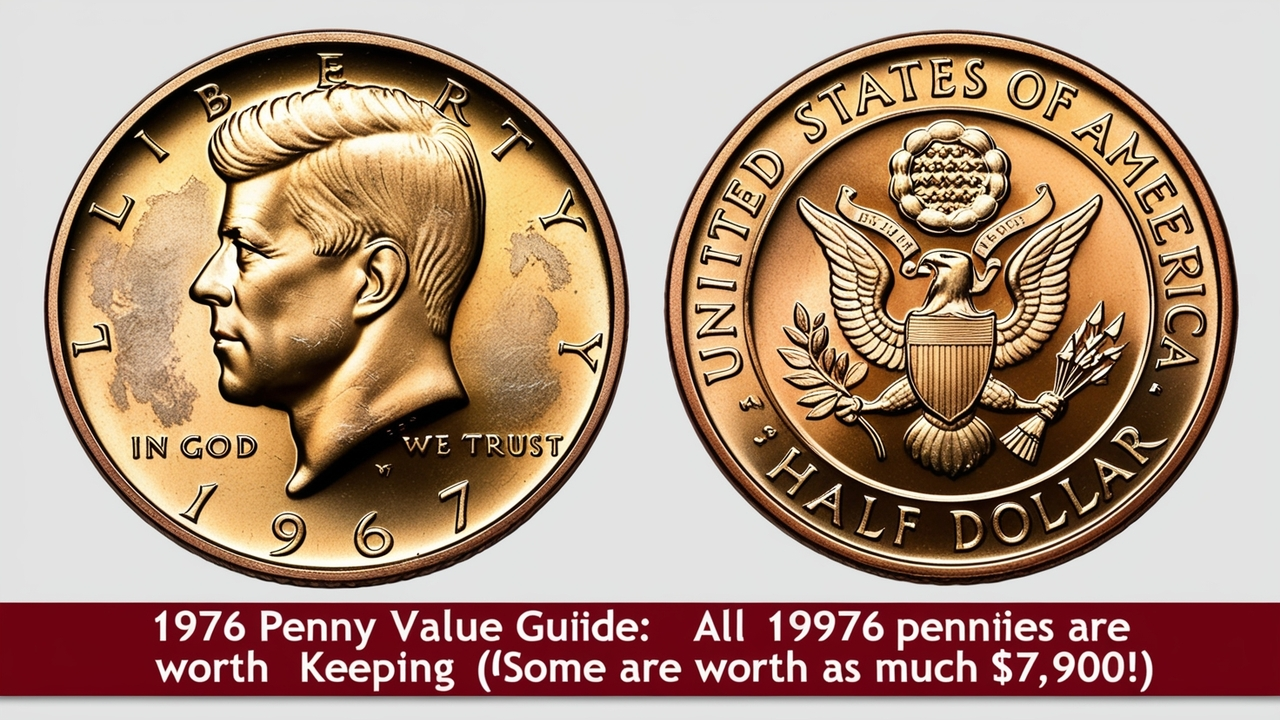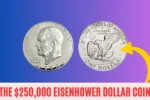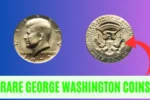The 1967 Kennedy half dollar is a coin that collectors find particularly fascinating due to its historical importance and several unusual minting anomalies. Some versions of this coin can be worth a significant amount of money, especially those with rare errors or high-grade conditions. While most 1967 half dollars are valued primarily for the silver content, certain versions, particularly those with minting faults, can fetch prices far above their intrinsic metal value. This article will delve into the worth of the 1967 Kennedy half dollar and the specific minting mistakes that collectors highly prize.
The 1967 Kennedy Half Dollar: An Overview
The Kennedy half dollar was introduced in 1964, following the tragic assassination of President John F. Kennedy in 1963, as a tribute to his legacy. The coin, produced for the first time in 1964, was made of 90% silver, but by 1965, the U.S. Mint began to reduce the silver content due to rising silver prices and the need for cost-efficient coinage. By 1967, the Kennedy half dollar contained 40% silver and 60% copper, a composition that remains an important feature of the coin’s value today.
Specifications of the 1967 Kennedy Half Dollar:
- Composition: 40% silver, 60% copper
- Weight: 11.5 grams
- Mint Marks: None (all 1967 half dollars were struck without mint marks)
What Is the 1967 Half Dollar Worth Today?
The value of a 1967 Kennedy half dollar largely depends on its condition and the silver content. The coin contains about 0.1479 troy ounces of silver, so its melt value fluctuates in line with silver prices, typically ranging between $4 and $6.
However, the collector value of the coin can differ significantly based on its condition. Here’s a breakdown of how the coin’s value varies:
- Circulated Condition: $4 to $6 (based on silver content)
- Uncirculated (MS-60 to MS-63): $8 to $12
- High Grade (MS-65 or higher): $40 to $100+, depending on demand and quality
Rare 1967 Kennedy Half Dollar Errors
The 1967 Kennedy half dollar, like many coins, was subject to occasional minting errors that are highly prized by collectors. These error coins can significantly increase the value of the coin. Here are some of the most sought-after errors for the 1967 Kennedy half dollar:
1. Double Die Obverse (DDO)
A double die obverse (DDO) occurs when the design on the obverse side of the coin is struck twice, resulting in a clear doubling of the inscriptions. Common signs of this error include doubled letters in the words “LIBERTY” or “IN GOD WE TRUST.”
- Value: $50 to $500, depending on the clarity of the doubling and the coin’s grade.
2. Die Clashes
Die clash errors happen when the obverse and reverse dies of the coin press against each other without a coin between them. This collision results in parts of one side’s design being imprinted on the other side.
- Value: $20 to $200, depending on how clearly the clash is visible.
3. Off-Center Strikes
An off-center strike occurs when the coin is not properly aligned during the minting process, causing a portion of the design to be cut off. These off-center coins are often easy to spot due to their asymmetry.
- Value: $50 to $300, depending on how much of the design is missing.
4. Missing Clad Layer
Occasionally, the outer clad layer of a coin is missing, leaving the copper core exposed. These coins are extremely rare and highly collectible due to their unusual nature.
- Value: $100 to $400, depending on how much of the clad layer is missing and how well the coin is preserved.
How to Identify Rare 1967 Half Dollar Errors
If you’re hoping to spot a rare 1967 Kennedy half dollar error, here are a few tips:
- Inspect Carefully: Use a magnifying glass to examine the coin for any doubling (DDO), die clashes, or off-center misalignments.
- Check the Weight: If you suspect a missing clad layer, weigh the coin. A missing clad layer can make it lighter than a typical half dollar.
- Preserve the Coin: If you find an error coin, protect it in a holder to keep it in good condition, as that will help maintain or even increase its value.
Conclusion
While the Kennedy half dollar from 1967 has inherent value due to its silver content, rare errors and high-grade examples can fetch even higher prices. Whether you’re collecting these coins for their historical significance or hoping to find a rare minting anomaly, the 1967 half dollar remains a fascinating piece of American numismatic history. Take a closer look at your coins—you may just have a valuable gem in your possession!



